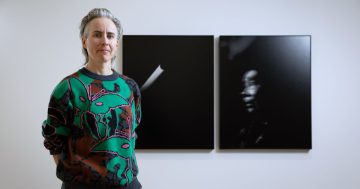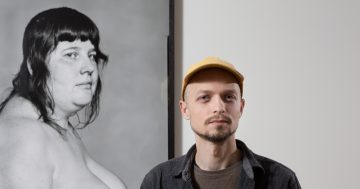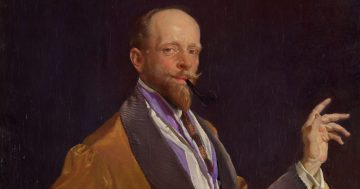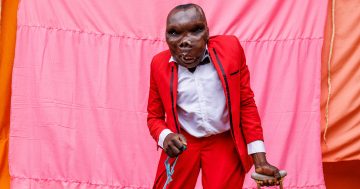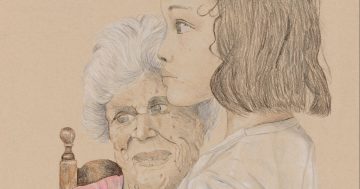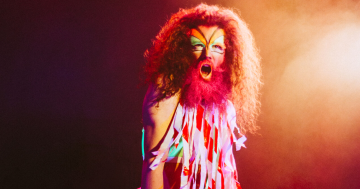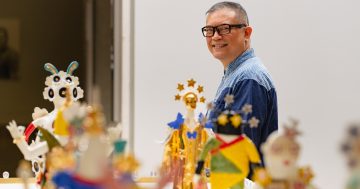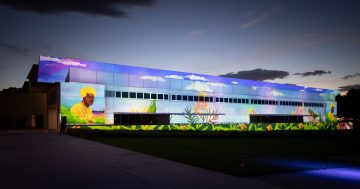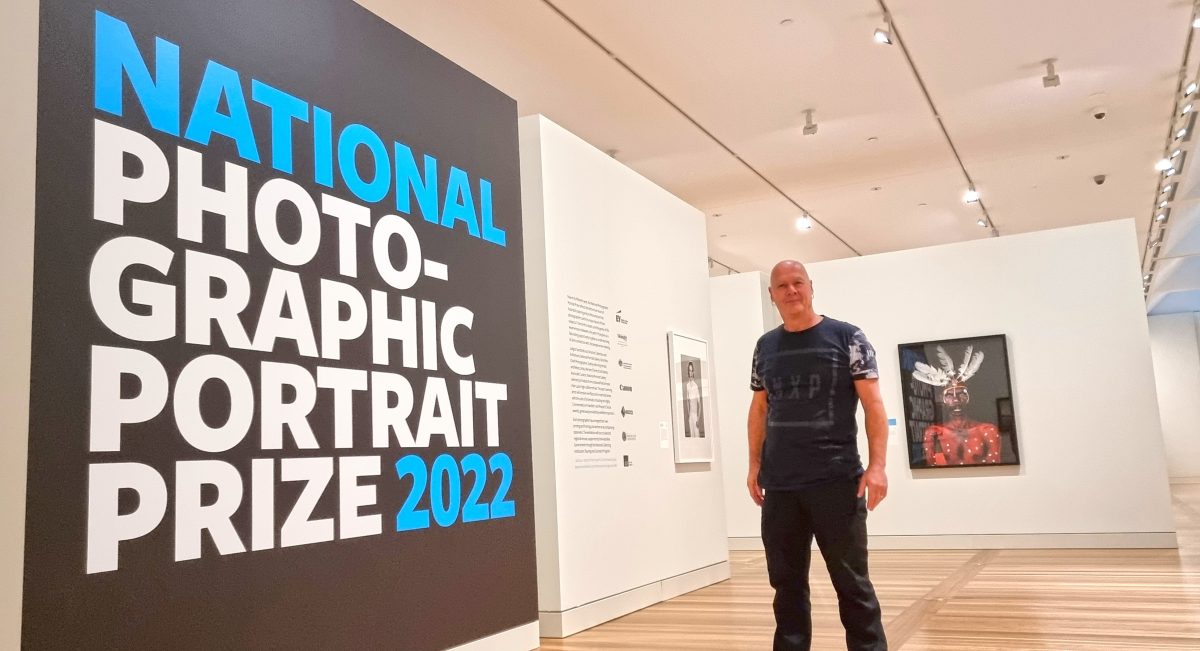
Winner of the 2022 National Photographic Portrait Prize Wayne Quilliam, in an image shot by his daughter at the National Portrait Gallery, Canberra. “She’s the next big thing,” he says. His winning image, Silent Strength is on the wall behind him. Photo: Tanisha Quilliam.
Wayne Quilliam was shooting on country up in North Queensland. He was talking to a man he thought looked familiar, Eric Yunkaporta, an Aurukun man.
Turns out Wayne had photographed the man’s father, his uncles, aunties and it seems most other members of his family, so Wayne asked if he could photograph him. “I asked him to take a couple of steps back, took a few shots and that was it,” Wayne said.
“I’m old school with photography,” he said. “I knew I had the picture without looking back at it, but it was only later that I realised what I had captured.
“Everyone who sees that image now reckons I took it in the studio. But I didn’t. It was all taken with natural light – they don’t believe I took it in the bush. It’s like a lot of the work that I do, I’m just lucky to be in the right place at the right time.”
That image, Silent Strength 2021, won the National Photographic Portrait Prize for 2022, announced recently at the National Portrait Gallery in Canberra. The judges described it as “a work of immense power and beauty. Everything about this portrait is exceptional. The composition, the contrast, the richness of the colours in the ochres and feathers, and also the sense of pride the subject is portraying – all of these layers and details carry such power in connecting the subject and his story with the audience.”
For Wayne, it’s more about the subject matter than the award glory. For this Indigenous photographer, storyteller, teacher, artist, curator and cultural advisor, it’s just what he does – and who he is.
“You don’t enter awards like this for the money,” he said. “But when I found out what the prize money was, I looked at my wife and I said, ‘you know what we have to do?’, and she said, ‘yes’.”
Wayne said he would give a slice of the prize money and the camera gear he won to set up a foundation for First Nations Australians, young and old, so they could start recording their stories.
“I want to set up a program to teach storytelling and photography so people can capture their own stories on country,” he said.
“It’s not just for the young fellas. I want everyone, young and old, to be involved in this.
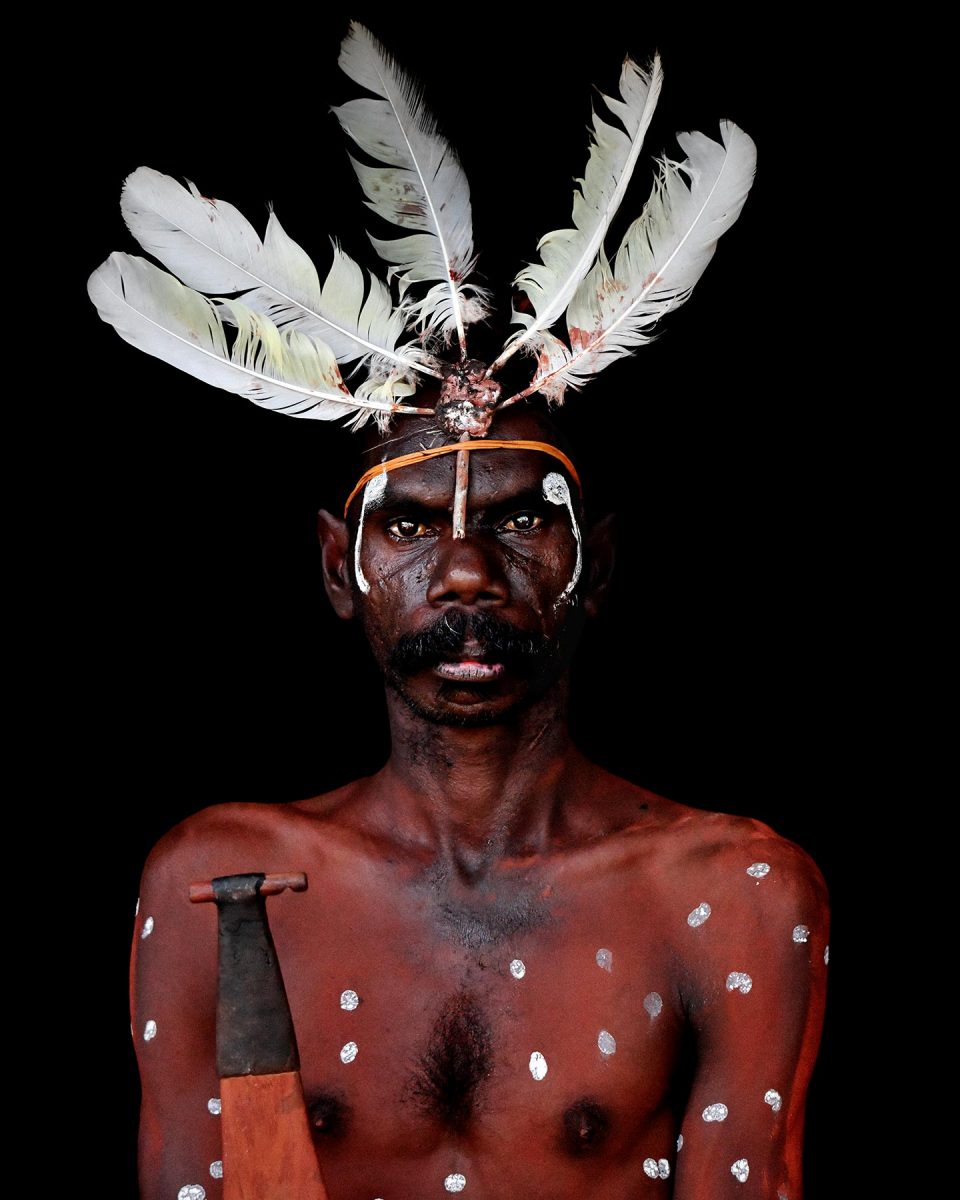
Winner of the 2022 National Photographic Portrait Prize, Silent Strength by Wayne Quilliam, featuring Aurukun man Eric Yunkaporta. Photo: National Portrait Gallery, Canberra.
“I can travel to the different places and teach, but I’ll leave the gear there for people to learn from and use themselves. And I want them to have some of the prize money too to make it all happen.
“I’ve been very lucky in my life, so I want to give back something tangible for people.
“Maybe by this time next year, we can have an exhibition of some of these pictures that people have taken.”
Wayne credited his “lucky” life to his earliest of days growing up in Hobart. His family lived next to the jail so he would see the dark place very day.
There was a time, early on, he reckons he could have gone in the wrong direction and maybe ended up inside that jail, but he was steered on to the right course, he said, by family – and a policeman.
“I had a good childhood, but it was tough,” he said. “There weren’t many opportunities when you lived in a Housing Commission place and there was never any money so I could have gone the wrong way.
“But my Nan ended up having a word with the local copper, and he was a really big bloke, so I listened to him.”
Today, Wayne is a mentor for First Australians across the country, young and old. He has exhibited his images widely here and overseas and also works as a film-maker, academic and drone pilot.
“As a child, yes, it was rough but I had amazing parents and community around me,” he said.
“I had a feeling I might be someone some day, but who knew it was going to be the local copper who was to help me out back then.”












